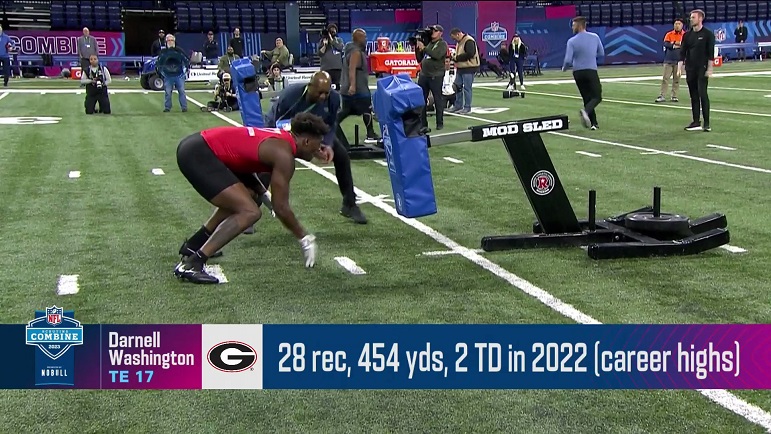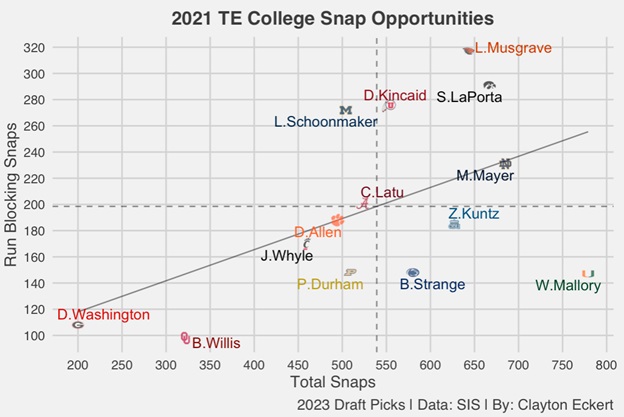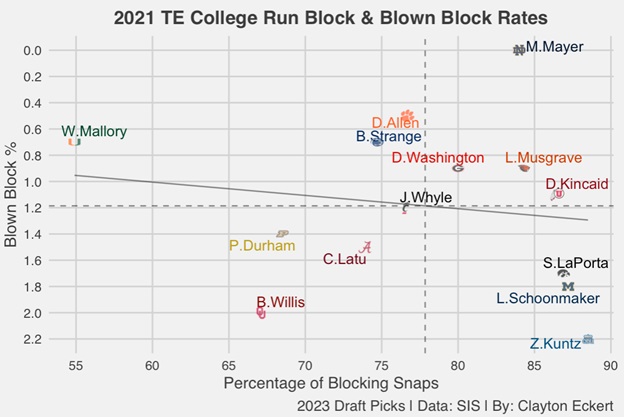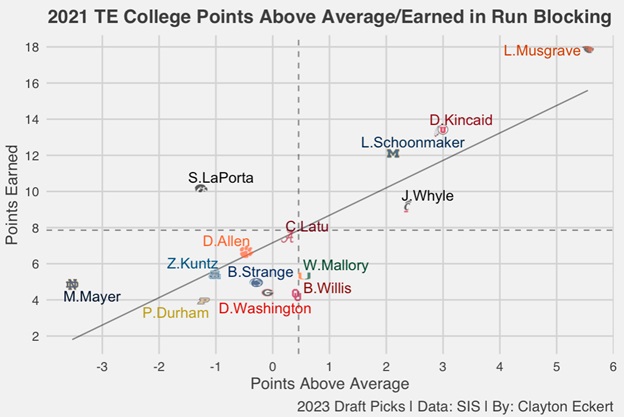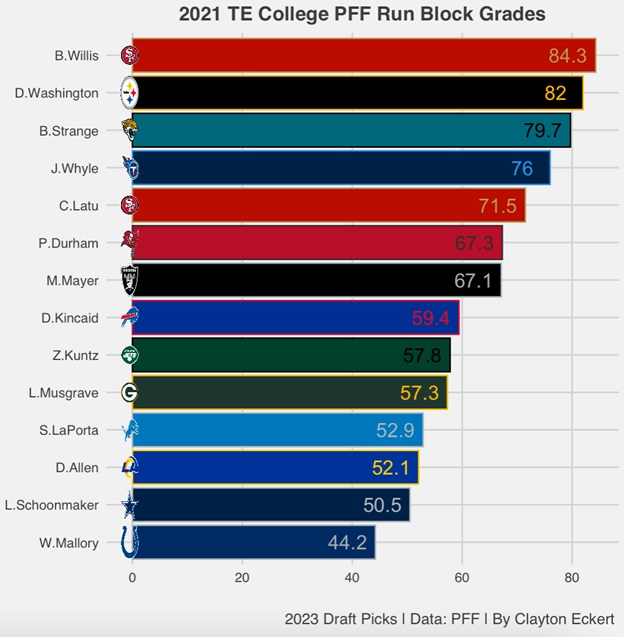Continuing the series, I wanted to look at and provide data for the tight end position, at which the Pittsburgh Steelers were able to select Darnell Washington in the third round of the 2023 NFL Draft. Today’s goal is to view how the players at the position fared as run blockers, where Washington is projected to make the biggest impact right away, following up my 2022 receiving, run blocking, and 2021 receiving articles. The data in this study looks at the 2021 season, focusing on the players who heard their names called in the draft, and one player was excluded due to Sports Info Solutions (SIS) not tracking smaller schools. The goal is to see how Washington stacked up among his peers.
First, let’s look at total snaps along with their run blocking snaps to get a gauge of the players’ opportunities, and the quantity value they provided their teams in the run game:
Washington had the least number of total snaps of the 14 qualifying players (200) and the second lowest run blocking snaps (108) in 2021, playing in eight games after missing the first four following a foot surgery. His injury history was reportedly a concern for teams, making his talents available for Pittsburgh to draft later than many expected. Washington encouragingly played every game in 2022, with increased total snaps (555), which still ranked low at 11th, and 275 run block snaps, the second most last year. So, in more playing time, we saw Georgia lean into Washington’s strength as a run blocker much more. That is important context as we dive deeper, consider what his rookie season will look like, and what likely gave Pittsburgh more comfort to select him following a healthy 2022 season.
Next, let’s start to look at quality aspects of play, with blown block rates (percentage of run blocking plays where the blocker does not successfully block the defender they attempted to engage with, giving the defender an opportunity to negatively affect the play), along with the percentage of the tight ends’ blocking snaps that came in the run game:
Here we see Washington was above the mean in both data points among his peers in the 2023 draft, one of four players to accomplish this feat. Eighty percent of his blocking snaps were in the run game in 2021, which ranked seventh, compared to 84.4% last year (sixth).
As I noted in the previous run blocking article, Washington was effective as a pass blocker as well, often getting on the move with tackle Broderick Jones, whom the Steelers were also lucky enough to select in April, leading the way in the short passing game that I can’t wait to see in action. Washington had a 0.9 blown block rate in 2021 (t-fifth) and followed that up with an improved 0.7 number last season, which is an encouraging positive trend on more opportunities.
Now let’s zoom in with SIS’s points above average metric (the total of a player’s EPA responsibility while blocking using the Total Points system that distributes credit among all players on the field for a given play). For blockers, this includes accounting for blown blocks, yards before contact on running plays, and performance given the defenders in the box, along with SIS’s points earned metric. These totals are scaled up to map to the average points scored or allowed on a team level, with the player’s snap count determining how much to adjust:
With a more macro view, we see Washington’s value as a run blocker in SIS’s eyes left them wanting more in 2021. Washington was at the mean in points above average ranking eighth, while his points earned landed at 12th. A big factor in the latter is his least amount of opportunity, which is definitely important to recall. In comparison, he had a much more substantial impact among 2023 drafted tight ends last year, ranking second in both data points. This highlights his encouraging availability and quality run blocking that will hopefully be his biggest and immediate impact in the NFL, as many project.
To wrap up, here are the tight ends’ 2021 run blocking grades from PFF:
In terms of PFF run block grades, Washington fared much better at 82, which ranked second, compared to a third ranking of 81.2 grade in 2022. Those are encouragingly strong marks, and great to see him at 80+ his final two seasons. Here’s to hoping he will aid the huge focus the Steelers put on this aspect of play this offseason as a successful investment to a Pittsburgh running game that is looking to continue its improvements from the latter half of 2022.
In 2021, Washington fared best in PFF run block grade (second), blown block rate (T-fifth), and percentage of blocking snaps (sixth). He was at the mean in this year’s tight end class in points above average (eighth) and was well below average in opportunities and points earned (12th). He had a very encouraging positive trend in 2022, ranking in the top three in run block snaps, points earned, points above average, and PFF run block grade, along with above average marks in percentage of blocking snaps and blown block rate. His only below average result came in total snaps, which is very encouraging recent quality from his final season.
Pittsburgh seemingly had less concerns than other teams about his injury history. The fit and role with the Steelers as a blocker and complementary receiver has me extremely excited and can’t wait to see how Washington pans out.
Throughout the rest of the offseason, I will dive deeper into the data as we continue to learn about the newest Pittsburgh Steelers. How do you think Darnell Washington will fare his rookie year? Thanks for reading and let me know your thoughts in the comments.

